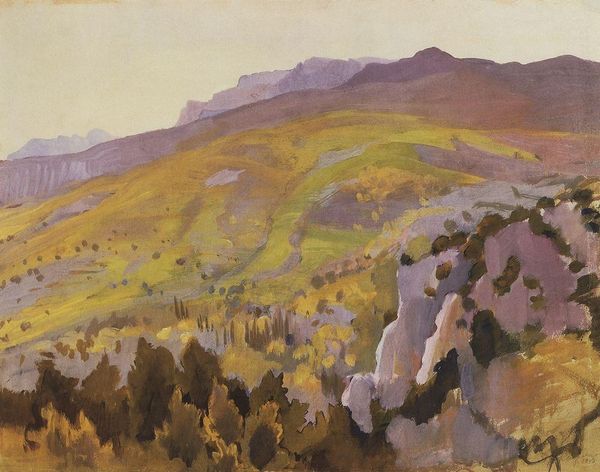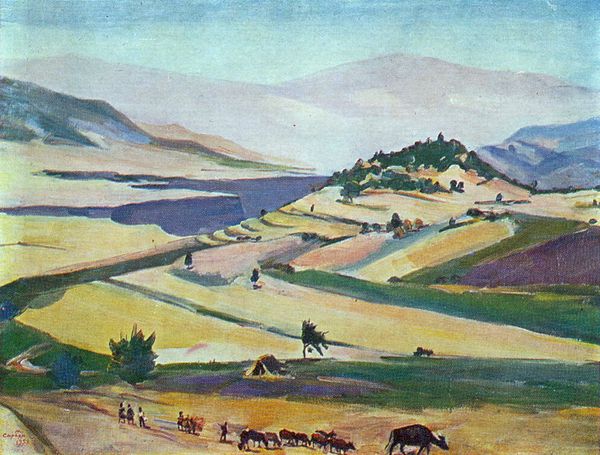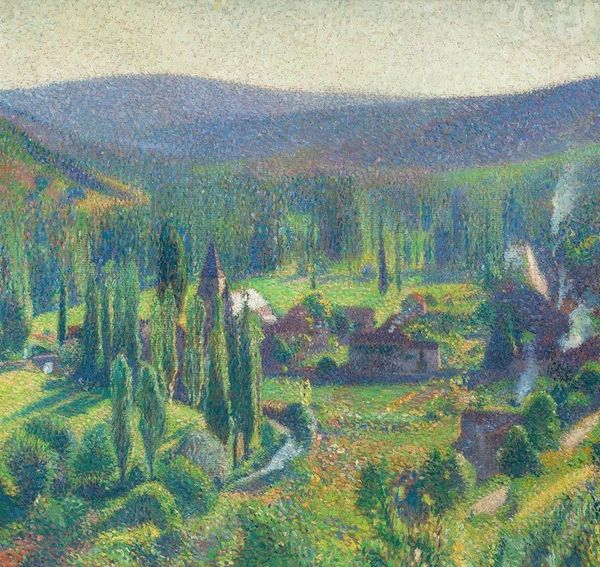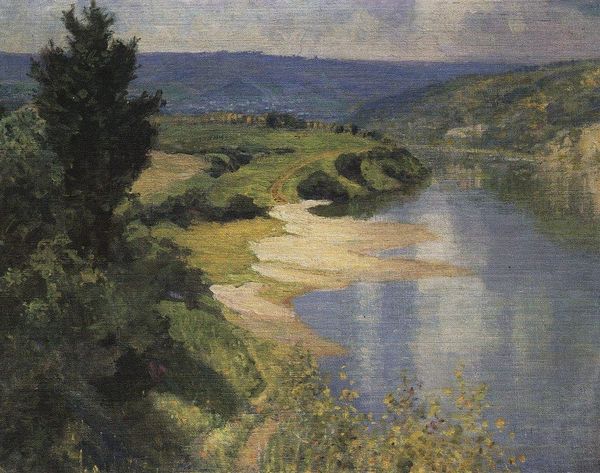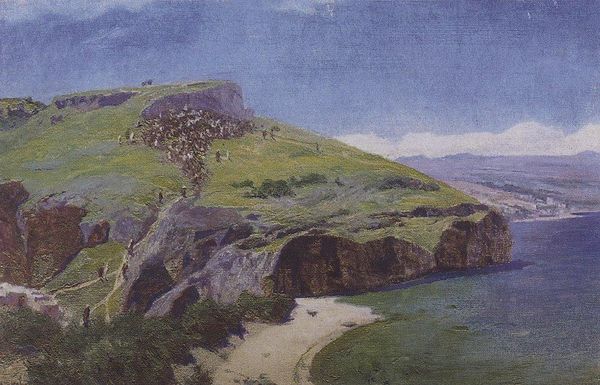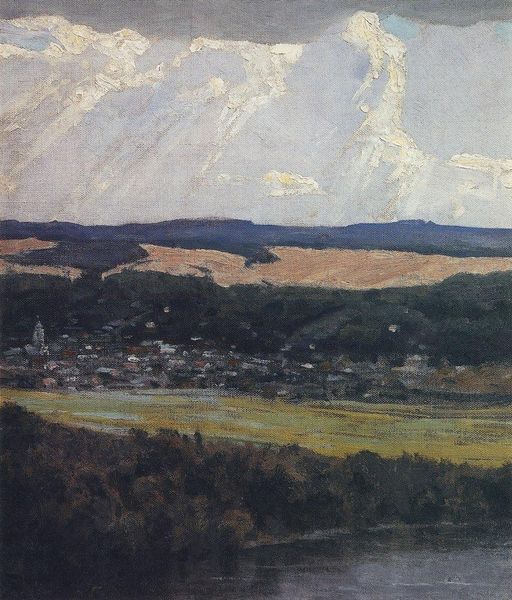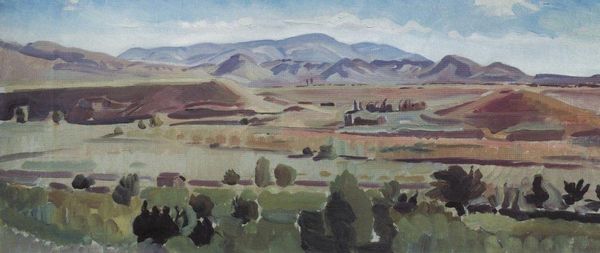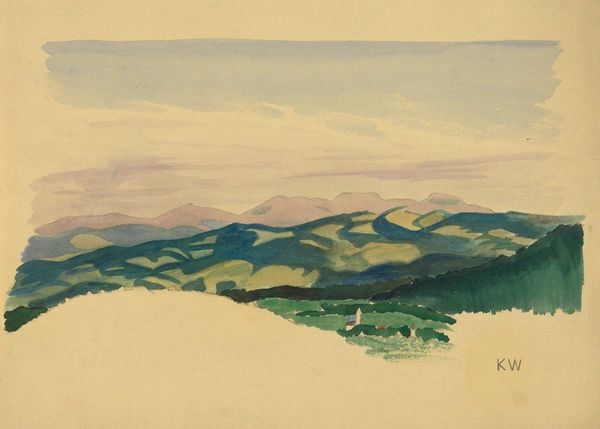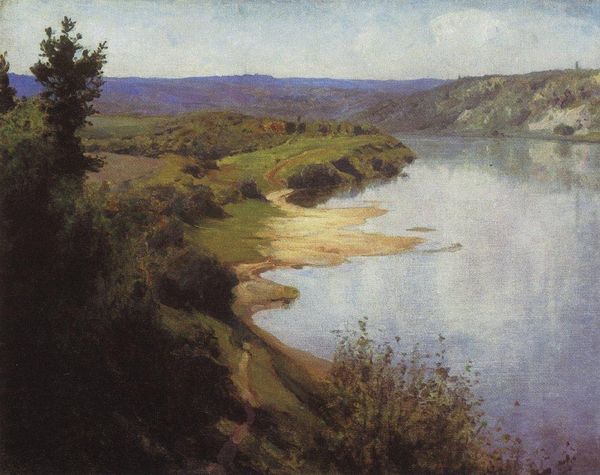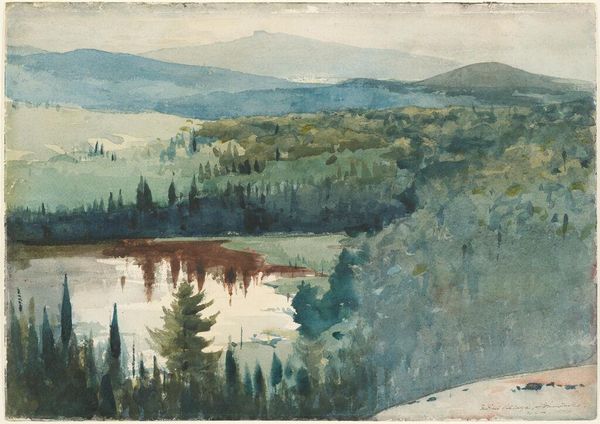
Copyright: Public domain US
Editor: Zinaida Serebriakova’s "Spring in Crimea," painted in 1914, presents a vibrant landscape. It’s interesting how the foreground is built of those almost architectural rock formations, while the rest dissolves into a soft haze. What strikes you most about this piece? Curator: It's the landscape tradition viewed through a material lens, certainly. Consider the pigments Serebriakova would have been sourcing and mixing. Were they local Crimean materials, or imported? How does that sourcing speak to broader economic and colonial relationships of the time? And what about the labor involved, from grinding pigments to the physical act of painting "en plein air"? It's easy to overlook the sheer physicality of artistic production when discussing impressionism, but the materials themselves, and the labor expended, are core to its meaning. Editor: I hadn't thought about the source of the pigments. Was there a particular Crimean school of painting at the time that would have influenced those material choices? Curator: The "Crimean School," per se, is less relevant than the overarching industrialization and trade networks influencing pigment availability. Remember that Impressionism itself, even as it depicts "nature," is utterly dependent on industrial advances in pigment production and portable paint tubes. Do we know what brand of paint Serebriakova favored? A material analysis might reveal connections to French or German manufacturing, placing her work within a global network of production. Editor: That’s fascinating. So looking at the "how" rather than just the "what" really opens up a new perspective. Curator: Precisely. Examining the means of production – from the canvas support to the brushstrokes themselves – roots the image in a tangible, material reality often obscured by stylistic categorizations like 'Impressionism' or 'Realism.' Thinking materially destabilizes any easy understanding of landscape and picturesque scenery as straightforward representations of nature. Editor: I see, that changes my view of landscape painting! Thank you for sharing these material aspects. Curator: My pleasure. Always consider the unseen labor and material conditions behind the artwork!
Comments
No comments
Be the first to comment and join the conversation on the ultimate creative platform.
